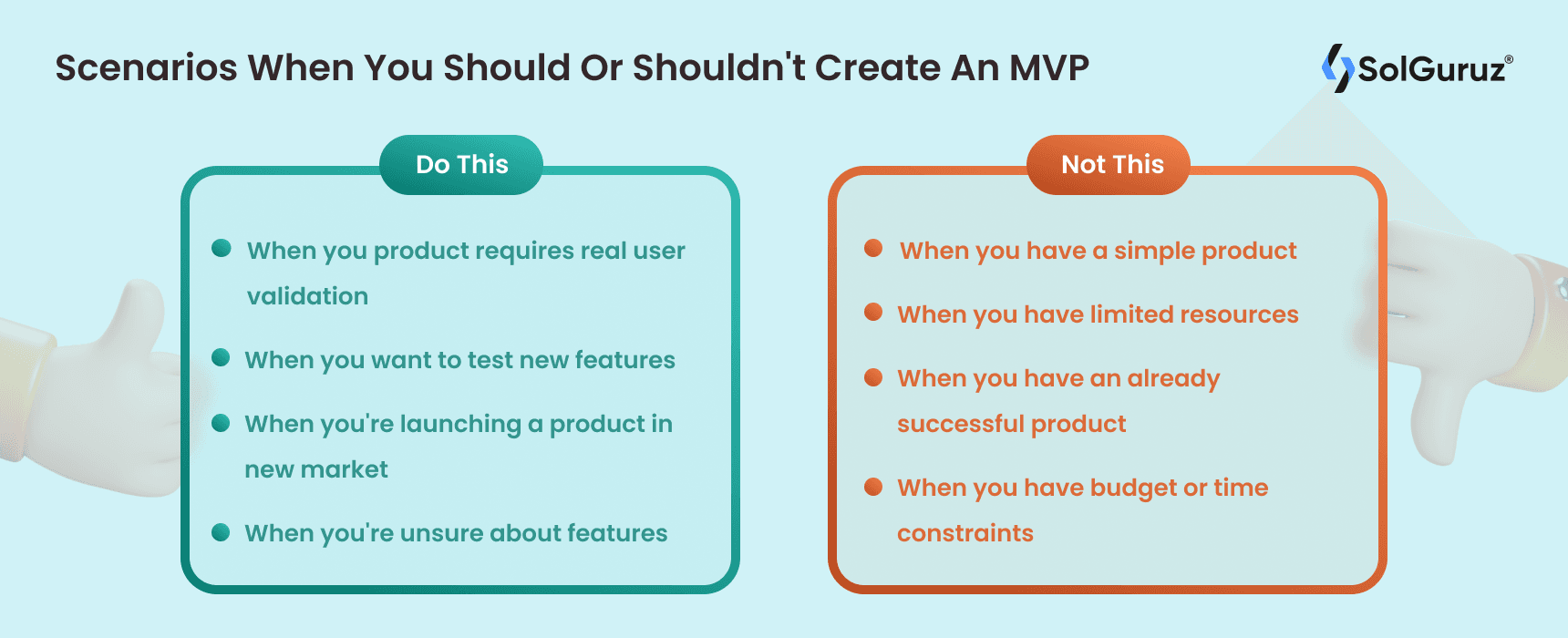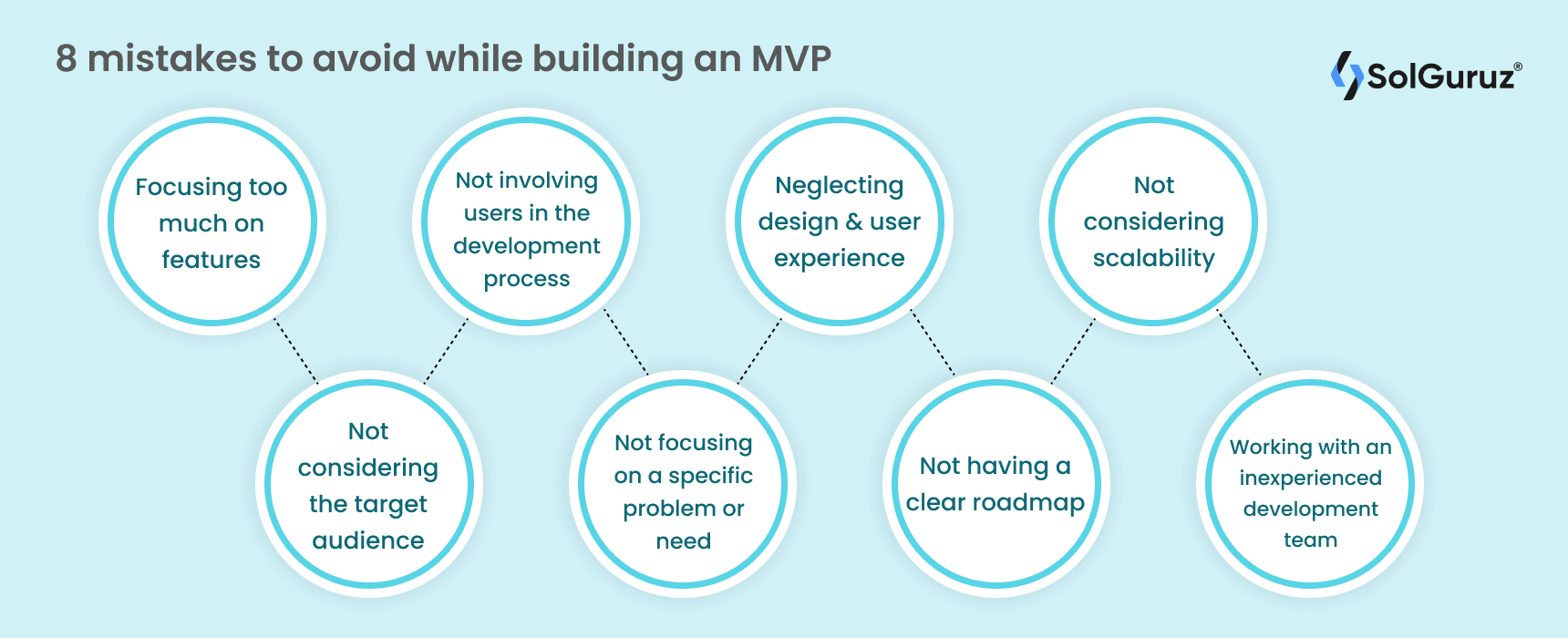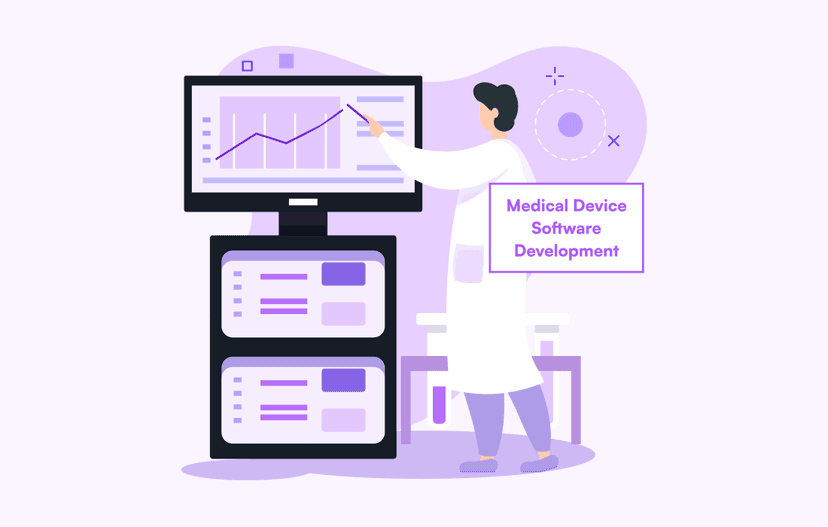How To Build A Minimum Viable Product In 2025
Unlock the potential of your startup with our guide on the latest trends and techniques for creating a successful Minimum Viable Product in 2025.

In today’s fast-paced and competitive business landscape, getting your product to market quickly is more important than ever. However, knowing where to begin with so many available options and features can take time and effort.
According to an article from the Codest, nearly 40% of startups fail because they need to validate their product ideas before launching (lack of market need). This is where Minimum Viable Product (MVP) development comes in.
MVP development allows you to validate your product idea and gather valuable feedback before committing to a full-scale launch by focusing on the core features and functionality that your customers truly need.
In this blog, we’ll explore building a successful minimum viable product in 2025.
Table of Contents
What Is the Minimum Viable Product (MVP)?

An MVP, or Minimum Viable Product, is a minimal yet functional version of a product that is released to a select group of customers or users. It helps test the viability of the product’s concept and gather feedback on its features, creating a web design and an overall user experience. This way, you can validate the market and product-market fit before fully committing to building the final product.
Here’s an example that explains how MVP works:
Let’s assume a startup company wants to launch a new social media platform for photographers. Instead of spending a lot of time and resources building a fully-featured platform with all the bells and whistles, the company decides to launch a minimum viable product first.
This MVP version would have basic functionality, such as the ability for users to upload and share photos and a simple profile setup. The company would then gather feedback from early adopters and make improvements before releasing a more full-featured platform version.
This approach allows the company to test the market and gather valuable user insights without a large investment of time and resources.
What Is The Purpose Of Creating An MVP?

Creating an MVP is a way to test the viability of a product idea with a small, targeted group of users. By launching an MVP, businesses can:
- Test the feasibility and desirability of a product or feature set before building a final product.
- Gather feedback from early adopters and the target market, which helps to validate the product-market fit.
- Assess the level of customer interest and demand for the product, which can help determine the final product’s potential success.
- Identify any problems or issues with the product early on so they can be addressed and corrected before the final launch.
- Gather data and insights that can inform and guide future development decisions.
- Minimize the potential for wasted effort and resources by investing in a product that is more likely to succeed in the market.
Scenarios When You Should Or Shouldn’t Create An MVP
Scenarios when you should create an MVP
- When you have a new product idea that you want to validate with real users – MVP allows you to test the product-market fit and gather feedback from the target market before committing to a full-scale launch.
- When you want to test a new feature or an enhancement on an existing product – MVP can help validate the new feature’s desirability and feasibility and gauge customer interest before committing to development.
- When you are launching in a new market or industry, MVP can help validate the market fit and gather feedback from the target market before committing to a full-scale launch.
- When you are still determining which features to include in the final product – MVP allows you to test different feature sets and gather user feedback to inform future development decisions.
Scenarios when you shouldn’t create an MVP
- When you have a simple product that doesn’t require testing with a niche audience – If your product is straightforward, and you are confident that it will meet the needs of your target market, there may be no need to create an MVP.
- Building a Minimum Viable Product can be time-consuming and resource-intensive, so if you need more resources to develop and launch an MVP properly, there may be better options.
- When you have an existing product that is already successful – You don’t need to validate the product-market fit.
- Budget or time constraints – There are better times to go for MVP when you have a very tight budget and timeline and can’t afford to spend time on testing and validation.

MVP is a great way to validate your product idea and gather feedback from your target market, but it’s not always the best approach. You should consider factors such as the complexity of the product, the availability of resources, and the level of uncertainty about the product-market fit before creating an MVP.
Steps To Create A Minimum Viable Product

Creating a Minimum Viable Product (MVP) involves several key steps, including:
- Define the problem: The initial step in developing an MVP is to pinpoint the specific issue or requirement the product aims to address. This will help you define the core features and functionality that your MVP should include.
- Who is your target audience? After identifying the issue, it’s essential to pinpoint the specific group of people you aim to serve. This will help you understand their needs and preferences and ensure that your MVP is tailored to meet those needs.
- Define the MVP: With a clear understanding of the problem and target market, you can define the MVP. This includes identifying the core features and functionality essential for your MVP to meet the needs of your target market.
- Build the MVP: Once the MVP is defined, it’s time to build it. Remember that the MVP should be a minimal version of the final product, only including the essential features and functionality.
- Test and validate the MVP: Once the MVP is built, it’s time to test and validate it with a small group of early adopters. By gathering feedback during this step, you can make any necessary adjustments before releasing the final product.
- Learn and iterate: Based on the feedback and results from the MVP, you should analyze the data and learn from it. Use the acquired information to enhance the minimum viable product and continuously improve through iteration.
- Launch and Monitor: When satisfied with the MVP, you can launch it to a large group of people (bigger feedback for best results). Monitor the feedback and performance of the MVP, and use that information to continue to improve the product.
Remember that MVP development is an iterative process, and the MVP Development steps may not always be linear. It’s important to remain flexible and open to feedback throughout the process and be prepared to make adjustments as necessary.
Cost Of Creating A Minimum Viable Product In 2025
The cost of creating a minimum viable product in 2025 can range from $20,000 to $150,000 or more. The necessary resources and effort to develop an MVP depend on its complexity and scope.
We can break down the cost of creating an MVP into several main categories:
- Design and user experience: This includes the cost of creating wireframes, mockups, and other visual elements, as well as user testing and user research.
- Development: This includes the cost of coding, testing, and deploying the MVP, as well as the cost of any necessary hardware or infrastructure.
- Project management and other costs: This includes the cost of project management, which includes tasks such as requirements gathering, planning, and communication with stakeholders. Other costs may include legal, accounting, and marketing expenses.
It’s important to note that the cost of creating an MVP can vary depending on the development platform and tools used, such as whether you decide to build it in-house or outsource it.
Developing an Minimum Viable Product in-house can be more expensive than outsourcing it to an MVP development company. Another advantage of outsourcing to an MVP development agency is that it’ll take full responsibility for everything from designing the product from scratch to developing the final product.
It’s crucial to consider the expenses associated with keeping the MVP updated and functional, as well as the cost of expanding it into a fully developed product.
Minimum Viable Product vs. Proof Of Concept: Key Differences
| MVP (Minimum Viable Product) | POC (Proof of Concept) |
| A product with enough features to satisfy early customers and provide feedback for future development | A prototype or simulation that demonstrates the feasibility of a concept or idea |
| Focuses on testing the market and customer demand | Focuses on testing the technical feasibility of an idea |
| Has a functional user interface | It may not have a functional user interface |
| Aims to validate the business model | Aims to validate the technical concept |
| Built with a goal of getting to market quickly | Built with the goal of testing and evaluating the concept |
Development Mistakes To Avoid While Building An MVP
Building an MVP can be a complex process, and there are several everyday things businesses need to correct that can lead to delays and increased costs. Here are some development mistakes to avoid while building an MVP:

- Focusing too much on features: One of the most common mistakes businesses make when building an MVP is including too many features. This can lead to an MVP that is too complex and time-consuming to develop, and it can also make it harder to gather feedback and make necessary adjustments.
- Not considering the target audience: Inadequate target audience research can lead to the creation of a product that does not meet the needs or preferences of the intended users, resulting in poor adoption and low engagement.
- Not involving users in the development process: It’s essential to involve users in the development process, as their feedback can help ensure that the MVP meets their needs and addresses their pain points.
- Not focusing on a specific problem or need: An MVP should be focused on solving a specific problem or need rather than trying to be all things to all people.
- Neglecting design and user experience: An MVP should have a minimum level of design and user experience. Neglecting this aspect can lead to a product that is difficult to use and does not meet the needs of your target market.
- Not having a clear roadmap A clear roadmap and development plan are essential to ensure that the MVP is developed on time and within budget. With a clear roadmap, the development process can be organized and timely.
- Not considering scalability: An MVP is a minimal version of the final product, but it’s essential to think about scalability and how the MVP can be expanded in the future. Not considering scalability can lead to a product that is difficult to expand and update in the future.
- Working with an inexperienced development team: Working with an inexperienced development team can lead to costly mistakes and delays in the MVP development process. It’s essential to ensure that you work with an MVP development company with a team with the necessary skills and experience to build and launch the MVP effectively.
How Can SolGuruz Help With Minimum Viable Product Development?
SolGuruz is an award-winning app development company specializing in helping businesses develop Minimum Viable Products (MVPs). They have a team of experienced developers, designers, and project managers who work closely with clients to understand their needs and develop tailored MVPs to meet those needs.
One of the key strengths of SolGuruz is its ability to understand and analyze the market and the target audience, which helps it identify the core features and functionality essential for the MVP. They prioritize user experience and design in order to create an MVP that is user-friendly and tailored to the target audience’s needs.
SolGuruz also strongly emphasizes quality assurance to ensure that the MVP is thoroughly tested and validated before it is launched to the public. They also offer ongoing support and maintenance services to help ensure that the MVP is updated and expanded as needed.
In addition to its technical expertise, SolGuruz is known for its strong project management skills and ability to communicate clearly with clients throughout the development process. This leads to the timely and cost-effective completion of the project.
Conclusion
In conclusion, building a Minimum Viable Product (MVP) in 2025 requires a clear understanding of the problem or need that the MVP is solving, a deep understanding of the target market, and a focus on the core features and functionality that are essential for the MVP.
It’s essential to involve users in the development process and to thoroughly test and validate the MVP before launching it to the public. With the right approach and team, you can build an MVP that is not only functional but also visually appealing, user-friendly, and exceeds your target market’s expectations.
Building an MVP can be challenging, but with the right approach and mobile app development team, it can be a valuable investment that can help you validate your product idea and bring it to market quickly and efficiently.
FAQs
1. How long does it take to build a minimum viable product in 2025?
The time it takes to build a Minimum Viable Product (MVP) in 2025 can vary greatly depending on the complexity of the product and the resources required to develop it.
An experienced MVP development company can take anywhere from 3 to 4 months to build an MVP.
2. How do I launch a minimum viable product in 2025?
Launching an MVP involves several key steps, including testing and validating the MVP with a small group of users, gathering feedback, making any necessary adjustments, and then launching the MVP to the public. It’s important to have a clear launch plan outlining the key milestones, target audience, and messaging.
3. How to build a minimum viable product in 2025 without code?
It is possible to build a minimum viable product (MVP) without writing any code, using no-code platforms or tools that allow for the development of an MVP without the need for coding. You can use Landing page builders like Unbounce and Leadpages, prototyping tools such as InVision, Figma, and Axure. Lastly, third-party APIs and services, such as Zapier, IFTTT, and Airtable, connect different apps and automate workflows without writing code.
4. What are the 3 critical characteristics for your minimum viable product?
An MVP must have three critical characteristics to be successful: it must solve a specific problem, be tailored to meet the needs of the target market, and undergo validation with a select group of users before being released to the public. By focusing on solving a specific issue and being designed for the target audience, an MVP can be effective and user-friendly, and testing it with a select group before a full launch helps to ensure its viability.
5. What is the best example of a minimum viable product?
One of the best-known examples of a minimum viable product (MVP) is the launch of the first version of Dropbox. Drew Houston, the co-founder, created a simple video that showed how the service would work and shared it with a few friends. On a few online forums, he received overwhelming positive feedback and launched the MVP, a simple file-sharing service that allowed users to upload and share files.
Looking for a technical Partner ?
SolGuruz helps you reach your goals with custom tech solutions.

Strict NDA

Trusted by Startups & Enterprises Worldwide

Flexible Engagement Models

1 Week Risk-Free Trial
Give us a call now!

+1 (724) 577-7737


